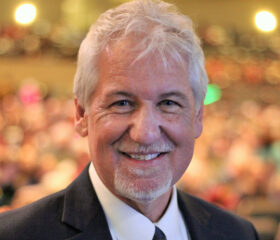Writer: Joshua Andino
 2 min read December 2021— The Federal Reserve is beginning to aggressively shift its monetary policy and forecast three rate hikes in 2022.
2 min read December 2021— The Federal Reserve is beginning to aggressively shift its monetary policy and forecast three rate hikes in 2022.
As the U.S. slowly begins to drag itself out of the pandemic, and in the the wake of the trillions of stimulus dollars printed in the name of saving the pandemic-stricken economy, inflation has emerged as the chief obstacle facing the American economy and become a hallmark of the post-pandemic landscape.
Historically, interest rates have been the primary tool to combat a runaway dollar. While the Fed has been averse to raising rates to avoid slowing down the otherwise robust economic recovery underway, it seems an aggressive shift is finally underway in the face of the greatest inflationary environment in a generation, with the consumer price index rising 6.8% from November 2020 to November 2021, the largest 12-month increase since the period ending June 1982.
While the Fed fundamentally views inflation as a result of lingering pandemic-related challenges in the supply chain and the immense demand in the market, it has begun to taper its purchase of bonds and other assets such as mortgage-backed securities (MBS). Tapering began with a reduction of $10 billion in Treasury purchases and $5 billion in mortgage-backed securities.The Fed’s $8.7 trillion balance sheet increased only by $2 billion over the past four weeks, with Treasury holdings up $52 billion and MBS actually reduced by $23 billion. Projections forecast as many as 3 rate hikes towards the end of 2022.
For the average American, the Fed’s policy meant cheaper mortgages and loans that fueled the unexpected real estate boom. It also opened the door to higher gas prices, bigger grocery bills, and skyrocketing rents and housing costs. Many often turn to their local banks and lenders, credit unions, or financial advisors to provide any formal or informal guidance those within the industry may be able to provide. Invest: spoke to those across the Twin Cities and Minnesota to get their perspective of the double-edged issue of interest and inflation, and what they see on the horizon.
 Dan Stoltz, President and CEO, SPIRE Credit Union
Dan Stoltz, President and CEO, SPIRE Credit Union
“On the loan side for credit unions, low interest rates sparked massive demand for first mortgages in 2020 and 2021. For savers, the low interest rates meant much lower returns. This led customers to go away from time-obligated savings products like Certificates of Deposit and simply keep their monies in lower-rate savings accounts. For financial institutions, there was and is a squeeze on margins with the stable, low rates. With investments, SPIRE has been investing in longer-term investments that we normally wouldn’t look at as the low rate environment looks to continue for the immediate future”
 Scott Flaherty, CEO, Lend Smart Mortgage
Scott Flaherty, CEO, Lend Smart Mortgage
“Low interest rates are the leading factor for demand, but demand is fueled by other factors also. We’re seeing movement fluctuate in and out of various areas, which is generating this transaction volume. People are relocating to different states, as many Californians are doing. Depending on the sector you were based in, you experienced either a great increase in financial wealth or experienced financial hardships. Fortunately, we experienced a boom that benefited our industry. However, when interest rates do climb, it will place pressure on certain areas, primarily because of its coupling with other problems. Raising rates is a part of the process in managing the multiple variables that can cause inflation. Inflation has a great impact on our business, especially on the government side. The Fed also reacts to inflation and I expect them to begin tapering at the end of the year to manage inflation. Inflation is the leading edge of what’s to come, which are significantly higher rates.”
 Stephen Glynn, Managing Director – Minnesota-Northern Plains Market, UBS
Stephen Glynn, Managing Director – Minnesota-Northern Plains Market, UBS
“The topic of inflation is certainly receiving a lot of press recently. The news channels, the business channels, are all talking about inflation. We’ve seen a pick-up in inflation, but it’s coming off of a very depressed price structure in 2020. We feel that inflation is going to be transitory and not sustained, although we do see a rise. We recently conducted an investor survey called Investor Watch, in which we polled thousands of investors. Sixty-one percent of those investors in the United States are concerned about inflation versus 48% of investors globally. So, certainly there is a concern there; however, 62% of the investors in that survey have more than 10% of their portfolio in cash, and inflation is not very kind to cash. It erodes your purchasing power. We feel there are other ways to deploy that cash that would be better in this environment and one of the sectors we are recommending is the banking sector. We feel that valuations are low, earnings are going to be strong, consumer balance sheets have never been better and we believe we’re going to see a continued increase in dividend payouts. Several banks are already doing that. If you look at the difference in what banks yield in comparison to short-term cash, or even bonds, that is an attractive sector to be in.”
 Jeff Wessels, President & COO, Crown Bank
Jeff Wessels, President & COO, Crown Bank
“We’re seeing interest rates leveling off. The compression is slowing. For the most part, banks have been able to manage their bottom lines and their yields. We’ve been able to lower prices to accommodate the lower interest rates. Should interest rates go up, we are nimble enough to be able to adjust. We have looked at different interest rate scenarios and the bank is in good shape if interest rates go up and down.
If inflation continues, there is going to be a little need for money. The money is in the system right now, the government has put it there. We will be there for our customers should they need some additional liquidity. Most businesses we work with are in good shape as well.”
 Chris Hilger, Chairman, President & CEO, Securian Financial Group
Chris Hilger, Chairman, President & CEO, Securian Financial Group
“Low interest rates are a challenge for most financial services companies, particularly life insurance. We count on our investment returns to help support the pricing and features of the products that we offer. Our core protection and retirement investment solutions are particularly relevant in this environment. This is a great time to get the advice of a financial professional to help navigate today’s challenges. The products we offer are more significant in stressful times, such as those we’ve experienced over the last 18 months.
The products and services that insurance and wealth management companies offer are aimed at helping a customer manage inflation, interest rates and volatility, and there is nothing like meeting with a financial adviser to help sort through your specific needs and make sure you have the right retirement protection in place.”
For more information, visit:
https://lendsmartmortgage.com/

